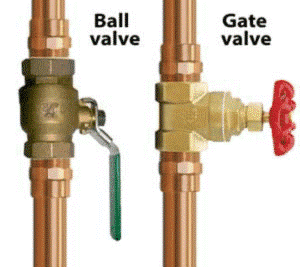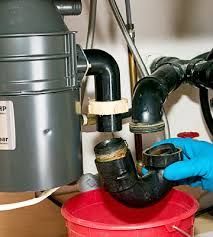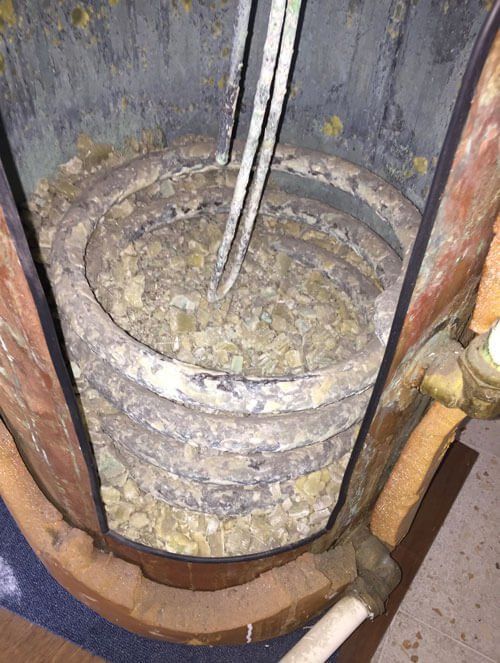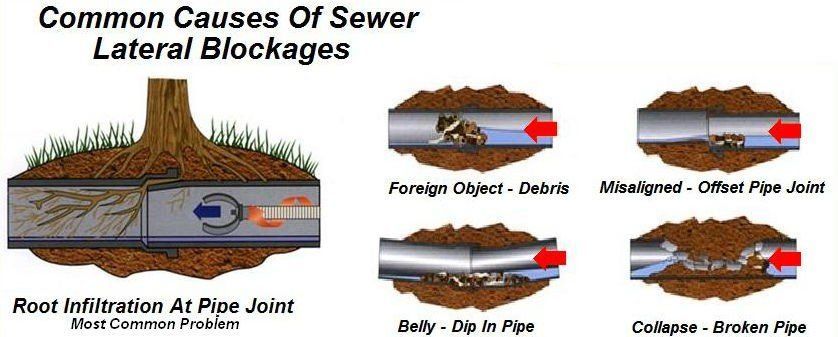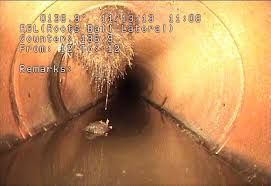JB Water and Air
There are a number of causes for blockage of sewer pipes due to roots in sewer line. When there is periodic reoccurrence of sewer pipe clogging, then it pays to invest in a sewer camera survey that produces a recorded video of the pipeline, which is used to determine the cause of the clogging. With a detailed diagnosis of the problem, then you can make an informed decision on the necessary steps to remedy the cause.
The most common cause for blockage occurs when water escaping from a sewer pipe, combined with the water seeking roots from a nearby tree, results in invasive growth of a root mass that eventually clogs the sewer pipe. Any crack or fissure in a sewer line sends signals to tree roots that they’ll follow. Tendrils resembling spider webs creep down into the cracks and send out roots, which have the potential to grow as large as the sewer line itself.
Invasive tree roots can create major headaches in sewer lines. To address this issue, consider these four potential remedies to unclog or clean sewer lines with root growth:
1.
Cut Tree Roots Mechanically
Cut Tree Roots Mechanically
The most common technique to get rid of roots in sewer lines is to use a mechanical auger. A powered sewer auger is sent down a sewer line with a rotating spiral head. The head has teeth on it much like a reciprocating saw blade. The rotating action cuts the roots, but many remain within the sewer line.
This clears the roots from the sewer line, but doesn’t solve the problem — the roots will grow back.
2.
Chemical Tree Root Removal
After mechanically removing the root mass, use a chemical to kill off the root structure so it doesn’t grow back. Most often recommended is copper sulfate that creates a poison zone within the soil outside the pipe. Roots can’t get into the pipe, and they die trying.
Most professionals prefer a copper sulfate product with a foaming agent like RootX or Roebic FRK Foaming Root Killer. Copper sulfate crystals sit on the bottom of the pipe. They do not coat the root masses that come down from the top of the pipe like fingers from a web. That’s basically how the roots grow in. The foaming root destroyers create a foam inside the pipe that coats the entire interior circumference of the pipe.
3.
Kill Tree Roots in Sewer Lines with a Hydro Jetter
An effective, but more expensive, way of clearing sewer lines is with a hydro jetter. This machine uses a pump and water that produces up to 4000 PSI through a hose with a specialty jetted tip that cuts through clogging materials in the sewer pipe, including tree roots. After the hydro jetter does its job, the sewer line can be flushed with a foaming chemical to kill any roots still present.
4.
Dig Up Invasive Tree Roots
Sometimes roots in sewer lines can’t be cleaned or cleared if it’s been damaged too badly. Excavation and replacement of the damaged section of pipe then becomes necessary. Determining the extent of the homeowner’s responsibility for the sewer pipe replacement work will be an important consideration.
Got Roots? At JB Water, we pride ourselves in providing an accurate diagnosis of your sewer clogging issues and in proposing cost effective solutions. We have state-of-the-art equipment for video surveys, augering, jetting, and pipe replacement needs.
The post
Roots in Sewer Line Solutions appeared first on
JB Water.


